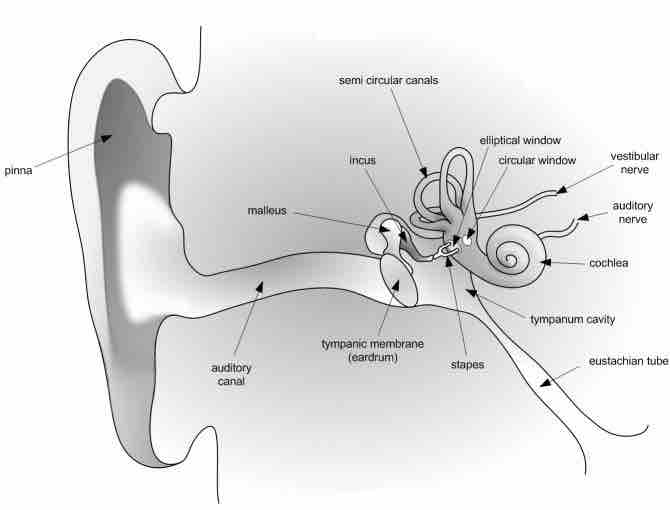The study of the human perception of sound is called psychoacoustics. Many factors go into hearing, including wave properties, sensory and brain processes. First, the wave has to be made, and it has a specific wavelength and frequency. Then the sound wave reaches the human ear, and is processed through many areas. Finally, the sound wave makes it through the ear and to the human brain, where even more action happens. You might think that when something makes a noise that you hear it instantaneously but, in reality, it goes through many steps first.
Wave Properties
We are not going to go into too much detail about the wave's physical properties, since it is out of the scope of this atom, but remember:
- Frequency is perceived by humans as pitch;
- The sound intensity is the amplitude;
- Humans can only hear a specific range of sound, usually from 20 Hz to 20,000 Hz;
- The factors that go into a sound are its intensity, frequency and overtones (which are like interference, or background noises).
The Human Ear
The human ear is made up of three main sections, as shown in :

The Human Ear
A detailed diagram of the human ear.
- The outer ear
- The middle ear
- The inner ear
We are going to start where a sound wave would start and follow it on its journey from outside your ear all the way to your brain. When you look at someone's ear, you are really only seeing the pinna, the outer most portion of the ear. It collects and focuses the sound wave. The wave then goes through your ear canal to the eardrum. The sound waves cause the eardrum to vibrate. Then we are in the middle ear, which has three very, very small bones: the malleus, incus and stapes. These can also be referred to as the hammer, anvil and stirrup, respectively. These three bones transmit the signal to the elliptical window. This is the beginning of the inner ear. The sound waves are then transmitted from the elliptical window through the inner ear's semicircular canals, the cochlea, and the audio nerve, which is filled with fluid. This fluid is what allows the body to detect movements and maintain balance. Your cochlea is shaped like a snail, and is full of teeny tiny hairs. These hairs vibrate differently depending on the frequencies. These vibrations release electrical impulses to the auditory nerve and are then sent to your brain, where they are understood as sound. So while this seems to happen very quickly, sound waves have to travel a long way before you ever hear anything!